SSL stands for Secure Sockets Layer. It is the standard technology that uses encryption algorithms to scramble data in transit. This aims to keep internet connections secure and safeguards any sensitive data that is being sent between two computers which prevents hackers from modifying and reading any information transferred.
SSL Certificate
To implement SSL for your website, first you must get an SSL certificate. SSL Certificates are small data files that digitally bind a cryptographic key to an organization’s detail, or simply it is a paragraph of letters and numbers that only your site knows – like a really “long password”. When installed on a web server, it activates the padlock and the https protocol and allows secure data transfer from a web server to a browser.
How to get SSL Certificate
Technically speaking you can create an SSL Certificate by yourself, but the problem is that all the popular browsers check with “Certificate Authorities” (CA’s) which also have a copy of that “long password” and can vouch for you. In order to be recognized by these authorities, you must purchase a certificate through them.
That is why you must pay a Certificate Authority for your SSL certificate. But before rushing up and buying you SSL Certificate, you should check with your web hosting provider because maybe your web hosting package might include a free SSL certificate.
Implementing SSL
After getting your SSL certificate, you have to do three more steps to implement SSL on your website:
- Activate the SSL certificate (Note: your web host might do this step for you).
- Install the certificate (Note: your web host might also do this step for you).
- Update your site to use HTTPS.
About H.A. Consultancies
H.A. Consultancies is a business, marketing, ISO, and ICT consulting firm based in Bahrain and operates in Saudi, Oman, and the UAE. It has been operating since 2012 and has over 6,000 clients all over the region.
H.A.’s ICT Services
- Customized ERP Solutions
- Customized CRM Solutions
- Microsoft Azure Cloud Services
- Microsoft Office 365 Services
- Document Management Systems
- Disaster Recovery Planning
- Mobile App Development
- Website Development
- Search Engine Optimization (SEO)
- ICT Infrastructure and Security Services
- Networking – LAN/WAN and Wireless
- Integrated Security System Services
- Linking Multiple Business Locations
- IP Telephony
- Backup Solutions
- Time and Attendance Systems
- Retail and Hospitality Systems
- Salon Management Systems
- POS Systems
Microsoft Planner, where have you been all my life?!
Tired of following up on your team to perform their committed tasks despite the constant reminders and follow up emails? Do you find to-do lists, post-it notes, and calendar reminders ineffective? Probably you have an Excel sheet where you keep track of all the tasks that you assigned your team? If this is the case, this article is for you.
Any manager would tell you that keeping track of their subordinates’ tasks takes a lot of effort. Some use small notepads or diaries that they carry around with them everywhere. Others use post-its or Excel sheets. Well, have I got a treat for you?!
Office 365 is full of hidden treasures that are, quite frankly, not being marketed effectively by the Microsoft team. I stumbled upon this gem while trying to setup a new group on Microsoft Teams to share the Excel Sheets and MS Project files that we use to keep track of our ongoing projects. We use MS Project to manage the big complex projects however we find it easier to keep track of the granular tasks on Excel Sheets – until we discovered Planner.
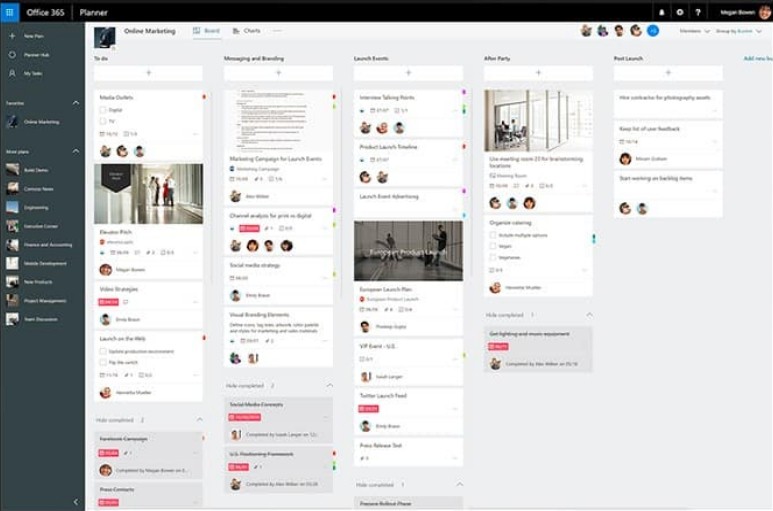
Microsoft Planner
Wow! That was my first reaction when I first used the app. It literally took seconds to install on Teams and it was so intuitive that our new-hire was able to convert all our Excel data onto it within minutes. It lists all our small projects and sales leads in a single Kanban view with all the tasks listed neatly below each header. This view can be changed to show tasks for each employee, or tasks according to their due dates or status. And if that isn’t enough, summary charts showing the total number of tasks for each employee along the number of late and open tasks overall and for each employee are readily available in the Charts view.
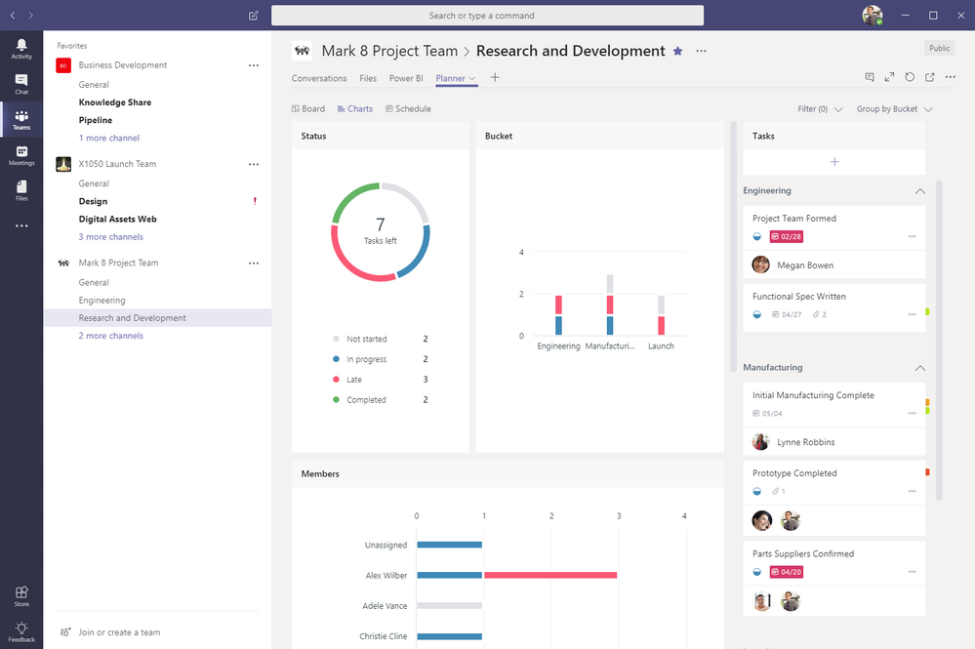
Microsoft planner
The beauty of the app isn’t just its visual appeal. I literally fell in love with it when I received an email notification the day after we installed it telling me about all the tasks that were due today and those that are due in the coming few days. Wow! These are the small tasks that are usually forgotten such as following up on quotes that have been sent or taking an online training course. It wouldn’t be practical to include them into MS Project and are quite difficult to keep track of because, well to be frank, they are not urgent.
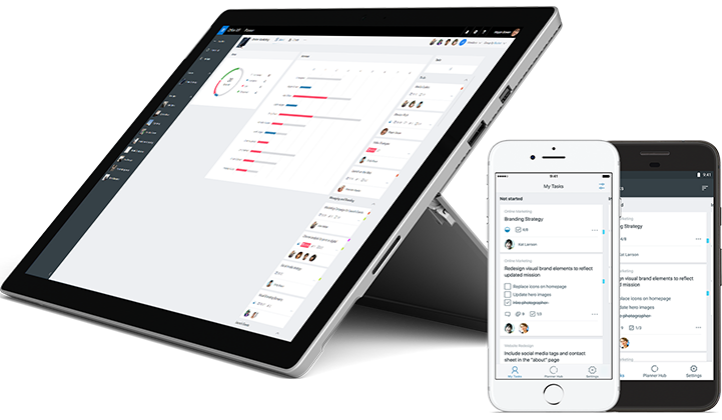
Microsoft Planner
I have been using Microsoft Planner for about a week now. It is an excellent tool that takes care of the headache of following up on people and allows you to focus on more important things. It also comes with a free mobile app that is even better than the desktop application or web portal – surprizing right?
In my opinion, Microsoft Planner is an excellent tool for a small business owner, a department head, or even a project manager. It is not to be compared with MS Project though. These are two very different programs despite their similarities. MS Project has much more features that help you calculate and manage every single aspect of your project which is exactly why it is not suitable for keeping track of the tiny day-to-day tasks that MS Planner is designed to handle.
Of course, there is some room for improvement. For example, tasks cannot be linked as predecessor and successor like MS Project, and the graphical reports can take a little bit of getting used to. However, in case you need a more powerful project management tool, probably Planner is not the best choice. On the other hand, if you need something to keep track of the mundane tasks that often go forgotten, then look no further than Planner.
The feasibility study is the important step in any software development process. This is because it makes analysis of different aspects like cost required for developing and executing the system, the time required for each phase of the system and so on. If these important factors are not analyzed, then definitely it would have impact on the organization and the development and the system would be a total failure. This step is a very important step in a software development life cycle process.
In the software development life cycle after making an analysis in the system requirement the next step is to make analysis of the software requirement. In other words, feasibility study is also called as software requirement analysis. In this phase development team must make communication with customers and make analysis of their requirement and analyze the system.
By making analysis this way it would be possible to make a report of an identified area of a problem. By making a detailed analysis in this area, a detailed document or report is prepared in this phase which has details like project plan or schedule of the project, the cost estimated for developing and executing the system, target dates for each phase of delivery of system developed and so on. This phase is the basis of software development process; since further steps taken in software development life cycle would be based on the analysis made in this phase therefore, careful analysis must be made in this phase.
Though the feasibility study cannot be focused on a single area, some of the areas or analysis made in feasibility study is given below. But all the steps given below would not be followed by all system developers. The feasibility study varies based on the system that would be developed.
- Feasibility study is made upon the system being developed to analyze whether the system development process require training of personnel. This help in designing training sessions as required in later stage.
- Does the system developed have scope for expanding or for switching to new technology later on if needed in ease? In other study is made to find the portability of the system in future.
- Is the cost of developing the system high or does it meet the budgeted costs? That is a cost benefit analysis is made. In other words, an analysis is made on cost feasibility of the project. This helps in identifying whether the organization would meet the budgeted costs and also helps the organization in making earlier and effective plans for meeting extra costs because of the system development.
- Analysis is made on what software to use for developing the system. This study and analysis would help to choose the best implementation for system and the organization. This feasibility study includes factors like scalability, how to install, how to develop and so on. This feasibility study in short includes the analysis of technical areas. This analysis helps the efficiency of the system developed to get improved. This is because by choosing the correct technology by making analysis on the needs of system helps in improving the efficiency of the system.
- The above feasibilities are analysis which helps in development of the system. But the scope of feasibility study does not end with this. Analysis or feasibility study also includes the analysis of maintenance stage. In other words, feasibility study is made to analyze how one would maintain the system during maintenance stage. This helps sin planning for this stage and helps in risk analysis. Also, the analysis helps in making analysis about what training must be given and how and what all documents must be prepared to help users and developers to face maintenance phase.
Advantages of making Feasibility study:
There are many advantages of making feasibility study some of which are summarized below:
- This study being made as the initial step of software development life cycle has all the analysis part in it which helps in analyzing the system requirements completely.
- Helps in identifying the risk factors involved in developing and deploying the system
- The feasibility study helps in planning for risk analysis
- Feasibility study helps in making cost/benefit analysis which helps the organization and system to run efficiently.
- Feasibility study helps in making plans for training developers for implementing the system.
- So, a feasibility study is a report which could be used by the senior or top persons in the organization. This is because based on the report the organization decides about cost estimation, funding and other important decisions which is very essential for an organization to run profitably and for the system to run stable.
Thus, before developing a product or software it is an essential step that one does feasibility study in some or all the areas mentioned which would help in developing and maintaining the software efficiently and effectively within budgeted costs.
What is Salon Iris?
Salon Iris is a management software for beauty salons and spas. Salon Iris acts as a POS (Point of Sale) and includes customer engagement functions as well, and it will guide your businesses to increase profitability.
Even if the salon was closed Salon Iris will allow customers to book appointments online, and it will send reminders to them to reduce no-shows.
The application also can assist spas and salons in managing their operations with payroll, staff scheduling, and inventory tracking.
Alongside the desktop version, Salon Iris is also available as a mobile version so you will always have access to your salon and spa operations.
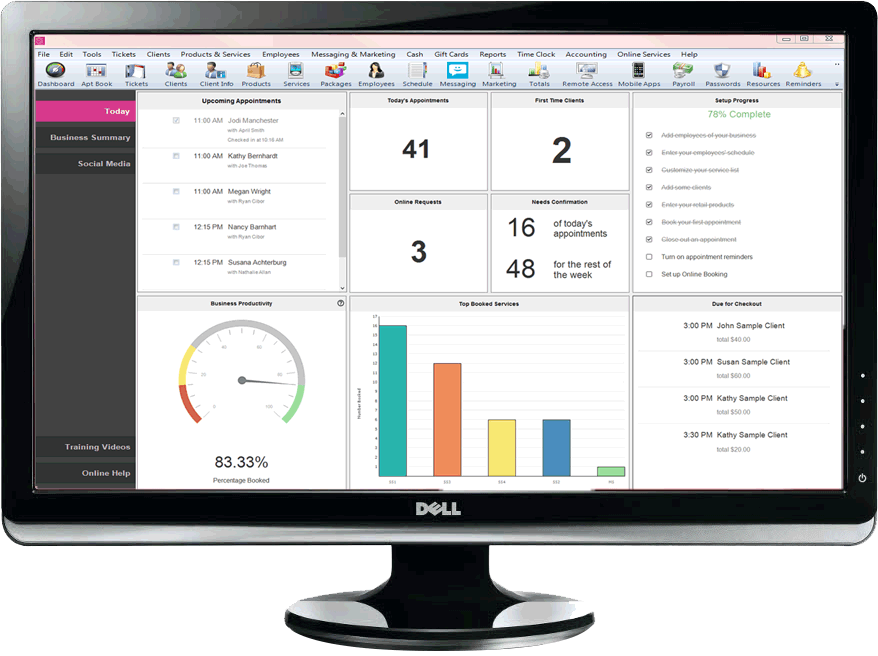
Salon Iris Dashboard
Salon Iris main benefits
Integrated POS
Salon Iris offers easy clients checkout with its integrated barcode scanning and credit/debit card processing. And if a client wants to pay using coupons or gift cards, the application simplifies their redemption.
Electronic appointment booking and management
Even if the salon was closed Salon Iris will allow customers to book appointments online, and it will send reminders to them to reduce no-shows. This will increase business profitability since bookings can be accepted even outside working hours.
Reports
With over than 200 kinds of reports, Salon Iris allows managers to monitor how well their businesses are doing, so they know which aspects they need to improve or take advantage of.
Salon Management
Salon Iris allows businesses to manage their payroll process within the system that also takes into consideration commissions and bonuses. It will also help in managing staff scheduling.
With Salon Iris, you can keep track of your inventory. No more missing key products so the business will continue offering services without any disruption.
Mobile version
Alongside the desktop version, Salon Iris is also available as a mobile version for both android and iOS platforms, so you will always have access to your salon and spa operations.
Salon Iris Features
- Standing Appointments
- Color-Coded Appointments
- Room Availability Notifications
- Mobile Management Access
- Real-Time Reporting
- Inventory Modifications
- Service Detail Updates
- Payroll Management
- Client Purchase Tracking
- Credit Card Processing
- Coupons and Gift Cards Support
- Dashboard
- Data Analytics and Reporting
- Automated Marketing Campaigns
- Customized and Targeted Promotions
- Inventory Tracking
- Staff Scheduling
- Automatic Data Back-Up
- User Access and Controls
- Loyalty Program
- Salon Appointment Booking
- Digital Invoices
- Barcode Scanning
- Quick Appointment Confirmations
- Appointment Reminders
Obtaining and utilizing a point of sale system may seem like a hectic mess that would cost you a substantial amount of money that may be used elsewhere, however, upon further evaluation, the point of sale system will benefit you and your business remarkably.
To begin with, there are two categories of systems, one which is aimed towards retail stores as well as the other category which caters for restaurants and hotels, which is commonly known as the hospitality category.
Point of sale systems provide several benefits, some of these benefits lie within scanning accuracy, which means that scanning a product’s barcode to identify what it is and display the unit price is considerably more accurate than punching numbers from a sticker on the product or for the employee to memorize most if not all product prices, which reduces employee errors.
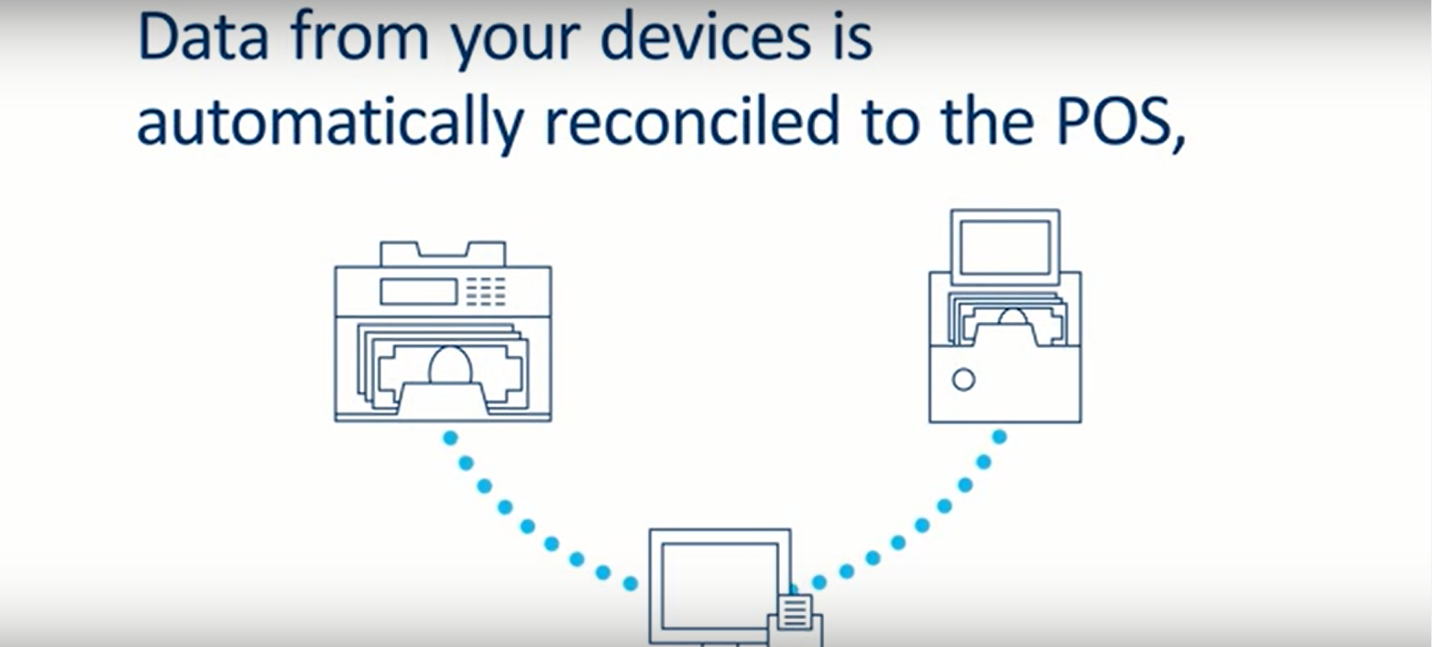
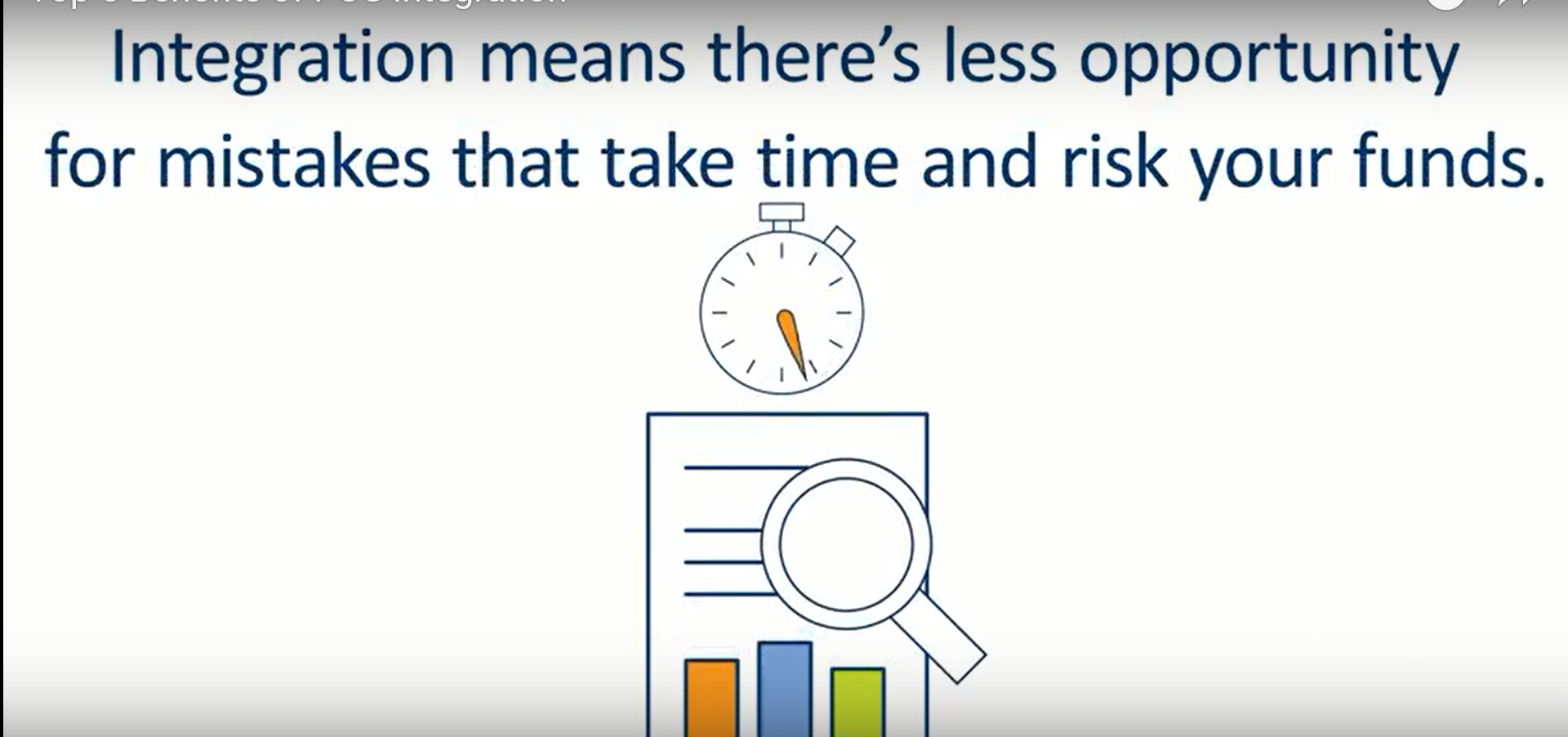
Moreover, POS systems allow the user to view and manage their inventory, flag items that are on demand to be reordered with the next shipment, and analyze sales patterns.
Furthermore, point of sale systems reallocate the back-office labor by having the employees work with customers, fulfill omnichannel orders and improve throughput at registers.
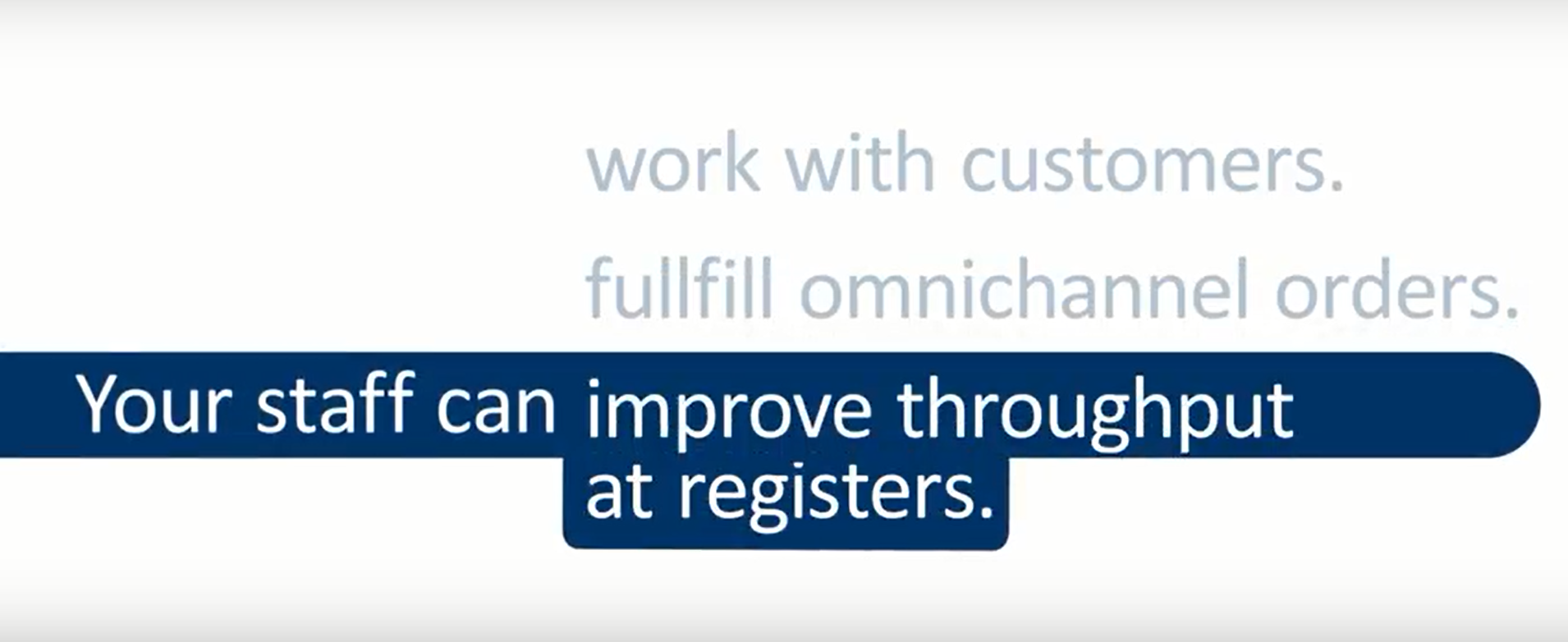
Other benefits include but are not limited to performing reconciliation functions easily and efficiently. In other words, if you have multiple POS systems in one location or in several locations, all the data can be automatically transferred to a single database, which in turn reduces reconciliation labor.
In addition, point of sale systems are in their very basis cash registers, however, due to being built upon a computer, it allows the user to enter a new world of data related to their business.
In summary, the added flow of detailed information in terms of sales helps business owners to come up with more effective business ideas and gives them the tools to evaluate their efficiency. To learn more about our POS systems and services that we offer in Bahrain, Saudi Arabia, Oman, Kuwait and the UAE, please visit our POS services page.

Point of sale software, or POS software for short, have revolutionized the restaurants industry, particularly the fast food sector. Aldelo is one of the best POS software which contains many features that restaurant owners will find useful in running their business.
One of the best features in Aldelo which sets it out amongst other restaurant POS software is that it is user friendly, intuitive, and easy to learn. This means less time and money will be spent on training your team and more time utilized to tending to your customers.
Aldelo makes managing orders easy. Your servers will be able to transfer orders from one table to another or divide bills with just a few taps so they can accept payments as soon as customers are ready to pay. Moreover, Aldelo will you to process discounts and, if needed, you can limit the use of the discount feature by setting permissions and authority levels to each employee.
With Aldelo’s Enterprise Cloud subscription, you will be able to access your Aldelo restaurant management software’s back-end features from your tablet or any computer that has a browser and an internet connection. This will allow you to get all kinds of reports, including sales, voids, discounts, and more. Aldelo surpasses several of the best restaurant POS systems in its scheduling tools, a feature that many of its competitor’s lack. Another feature worth mentioning is its countdown list, which shows managers and servers a list of the menu items the restaurant is running out of.
Through the Aldelo Touch subscription, your servers will be able to take orders using an iPad. You can add images of your menu items on the app which is a useful feature for overcoming any language barriers between your customers and servers.
Aldelo Restaurant POS software includes the ability to add order modifiers, which helps you deliver orders to your customers’ custom specifications.
H.A. Consultancies are proud to be an Aldelo partner extending services to clients in Bahrain, Saudi Arabia, UAE, Oman, and Kuwait. To learn more about Aldelo and our other restaurant POS solutions, please visit our POS solutions page.
As a restaurant owner, you might have run your business in the past without a POS (Point of Sale) system. Undoubtedly, it demanded a lot of effort from you and your staff. Having to write down the order and pass it verbally or by hand to the kitchen staff where it is routed to the appropriate preparation stations. Then, once the order is prepared, which might consist of various dishes and drinks that were prepared in different stations, the order is combined and delivered to the customer. The customer will then have to pay for his meal, if he hasn’t already, and a manually written receipt will have to be prepared and given to him upon his request. All of this and we didn’t even talk about call handling, order changes, order cancellations, deliveries, and all the other day-to-day activities that have to be managed during normal restaurant operations. It is obvious to see why such a manual operation could lead to numerous operational breakdowns since it is highly dependent on human interactions and could lead to frustration between staff members in case a mistake should ever occur in a customer’s order.
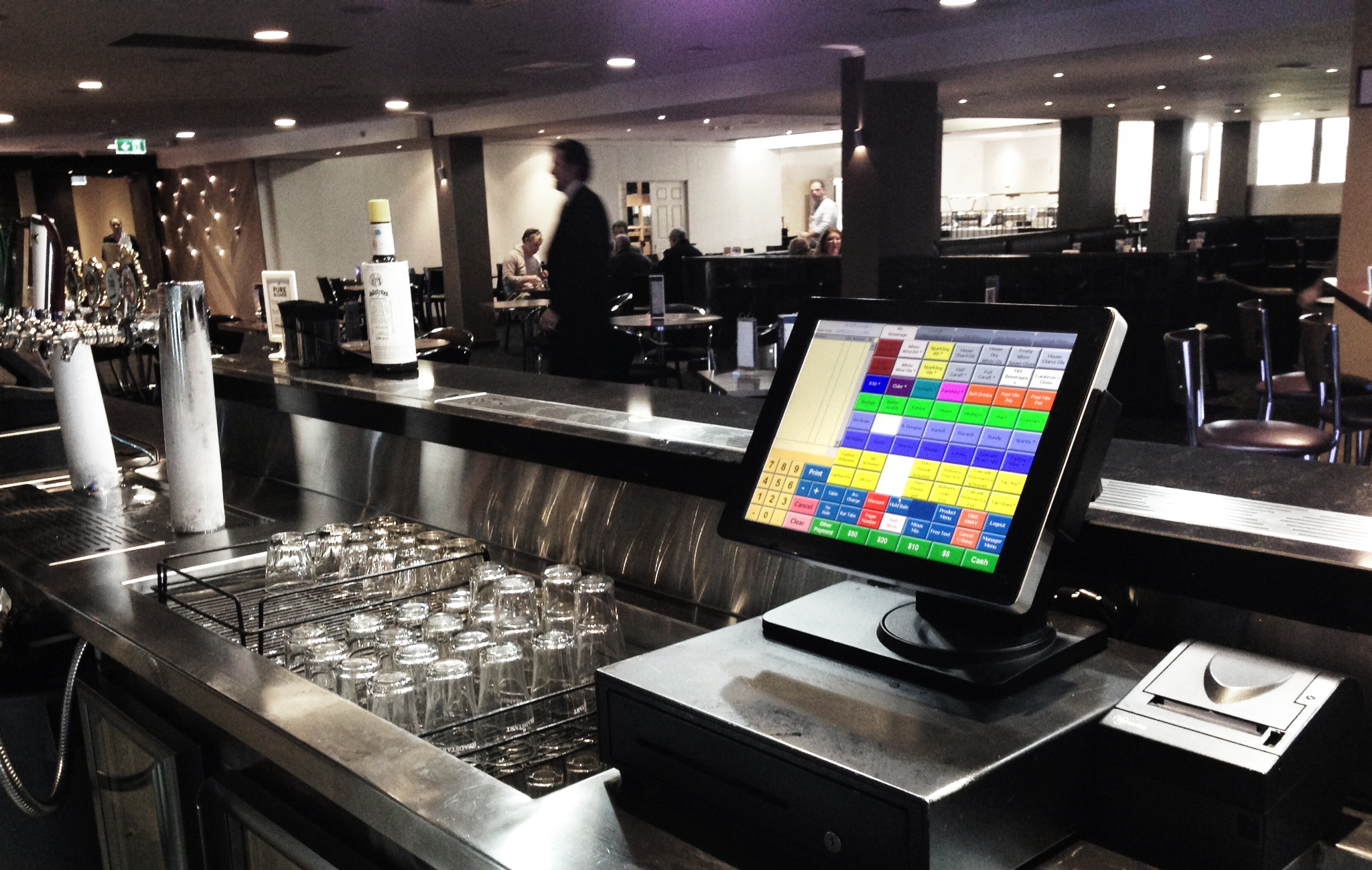
With a restaurant POS system however, each member of the restaurant’s staff would have his own authentication credentials and authorization level on the system. This would hold them accountable for any action they perform since their activities are logged in the system and could limit their authorities to the activities they are assigned to. Whenever an order is entered into the system, each item ordered will be printed or displayed on the corresponding preparation station in the kitchen automatically. Whenever a new customer calls, the waiter or waitress attending the call could enter his details into the system with a few clicks so that in the future, if he ever calls again, his details such as his name, address and order history would pop up automatically on the screen facilitating a much quicker and efficient operation.
With the right reporting insights, the business owner can see how his restaurant is performing and eliminate any costs that do not add value. In addition to that, the restaurant owner would be able to determine the fast-moving items and the busy periods of the restaurant so he can manage his resources more effectively. Plenty of reports can be generated from the system and if there is a special requirement, a custom report could be developed.
Our team of consultants at H.A. Consultancies will be happy to assist you in choosing between the different types of software and hardware and identify the best restaurant POS system to meet your needs. H.A. Consultancies has a vast experience in implementing POS solutions across Bahrain, Oman, Kuwait, Saudi Arabia, and the UAE.
